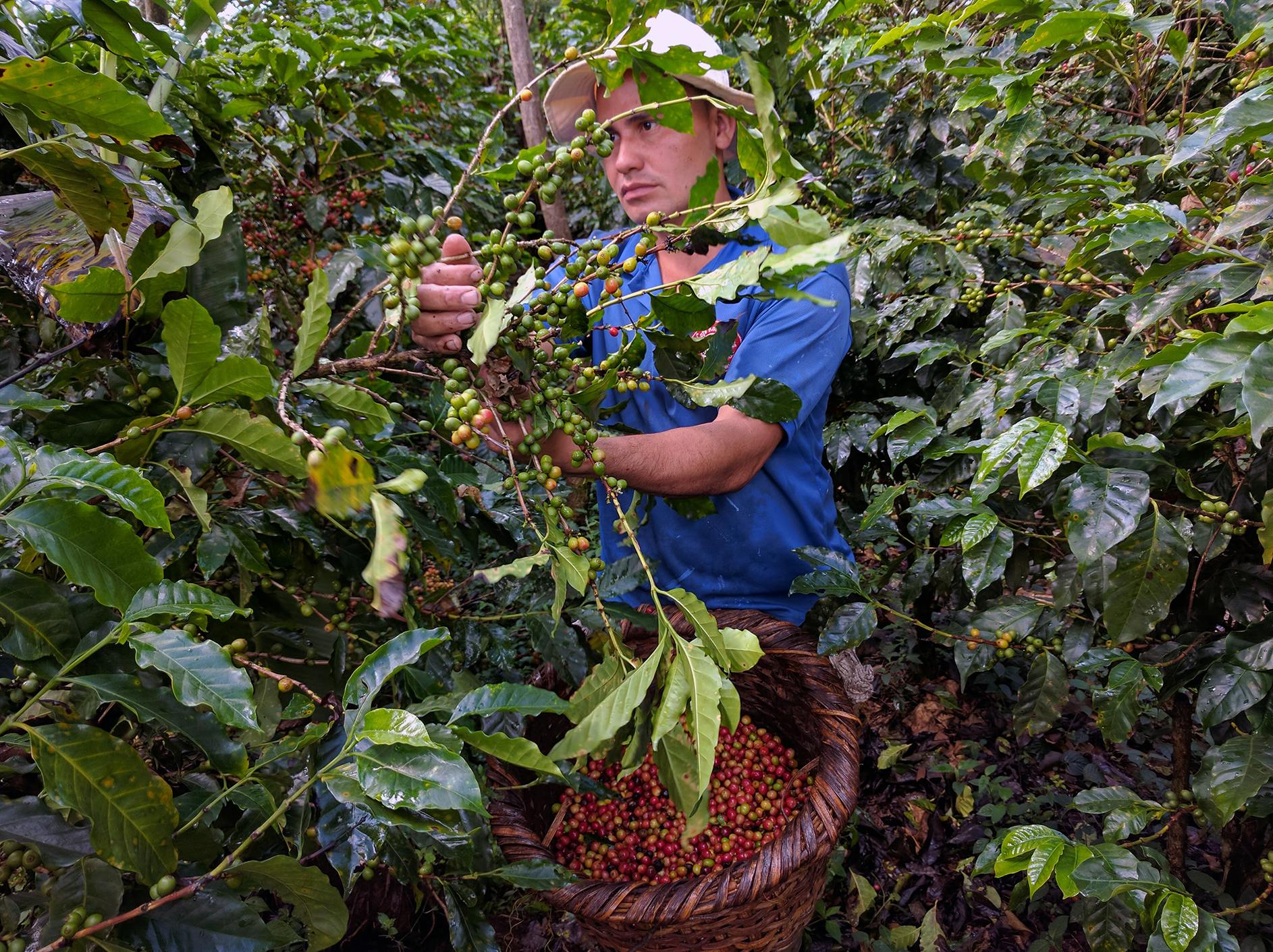LONG BEFORE IT WAS HIP, COSTA Rican coffee was once environmentally friendly, with measurable social and economic benefits. The history of coffee in Costa Rica can be traced back to the beginning of the 19th century, when arabica coffee beans were first sown. Coffee, known as the “golden bean,” thrived due to ideal growing conditions of fertile volcanic soil and high altitudes; Costa Rica is located in the tropical coffee belt zone.
At the time, coffee promised a fruitful economy. The government commercialized the crop by providing land and plants free of cost to anyone who wanted to cultivate coffee. Coffee surpassed cacao and tobacco as the largest economic driver of the country.
According to the Coffee Institute of Costa Rica (ICAFÉ), there were already 17,000 coffee bushes in the country by 1821. Coffee cultivation was financially attractive as well. Growers became exempt from tithing, and any farmer who grew coffee for five years could keep the land the government had provided.
Nearly 200 years later, the tradition of sustainable coffee is at risk of extinction due to chemical integration. According to the Regional Institute of Studies of Toxic Substances in Costa Rica, 40.1 pounds (18.2 kg) of pesticides are used per every 2.5 acres (1.0 hectare) of cropland. Globally, coffee and tobacco are sprayed with more chemicals than any other produce.
Finca Rosa Blanca is one of the few farms to use sustainable methods. In 2002, Glenn Jampol acquired the property, which is in the highlands, at 3,900 feet (1,200 m) above sea level, in the district of Santa Bárbara de Heredia. He then implemented a “closed-circuit” approach, without any agricultural chemicals, herbicides, fungicides, or pesticides. Instead, he used biotechnology and agroecology to cultivate shade-grown coffee.
“All this had been done with the idea of harmony with the ecology and conservation,” says Jampol. He estimates that 8 percent of coffee farms in Costa Rica follow chemical-free growing methods today. ICAFÉ confirms that just 0.40 percent of coffee is certified organic.
SOCIAL SUSTAINABILITY IS EQUALLY important to Jampol. Local laborers are given extensive training, paid fair wages, and have a safe work environment. One laborer, Gerardo, started by caring for the estate’s horses nearly three decades ago, and now tends to the coffee farm. Manolo, an on-site naturalist, has also been with the estate for over 20 years. As a result of Finca Rosa Blanca’s organic polyculture farming methods and social sustainability, they’ve received accreditation from ICAFÉ, the Rainforest Alliance, and the European organic certification body BCS Öko-Garantie.
At Finca Rosa Blanca, coffee bushes are placed to follow the verdant topography of the mountainous forest. Permaculture practice allows leaves to fall and decompose, becoming organic matter that feeds microorganisms in the soil. The coffee grows under an interspersed canopy of trees that provide shade.
Over 7,000 native trees were planted in precise locations, in order to create an equilibrium ecosystem, so that they won’t compete for water and nutrients with the coffee plants. Banana plants are a natural source of water storage. The poró (coral tree) provides nitrogen⁻fixing for the nutrient-rich soil. Some of the trees also form biological corridors that prevent erosion.
Intercropping—cultivating different crops together—strengthens the soil’s biodiversity while enhancing the natural aromas of the coffee beans.
Ulises Zuñiga, a local naturalist, notes that the lush forest attracts over 130 bird species—a key factor to making the organic crop successful, as many feed on pests.
ZUÑIGA EXPLAINS THAT HARVESTING IS DONE by hand, and selectively, to ensure a high-quality yield and minimal environmental impact. Pickers pluck red cherries individually from the coffee plants at the peak of ripeness, which they then collect in handwoven baskets worn around their waists. Measuring the quantity of the berries is done by sorting the crop of the day into cajuelas—boxes that each hold 20 pounds (9 kg) of coffee cherries.
Rather than hand-peeling each cherry, Jampol implemented a low-impact water system. The cherries are unloaded into a large tank of water that naturally sorts ripe cherries from those picked too soon. Unripe cherries are removed and fed to Californian red worms, which turn them into a nutrient-rich material for organic fertilizer. The water is recirculated in the tank.
The ripe cherries then go through a traditional chanqueadora, or depulping machine, that’s powered by solar panels. It pulls suspended filaments of pulp away from the coffee bean, and the eliminated pulp is used to make flour for baking.
“All this had been done with the idea of harmony with the ecology and conservation.”
THE COFFEE BEANS THEN SOAK OVERNIGHT IN water-filled fermentation tanks to remove some of the parenchyma, a slimy layer covering the bean. The water, now enriched by the enzymes of the mucilage, is repurposed to nurture the farm.
To maintain a low carbon footprint, Jampol use humid processing, naturally sun-drying his coffee beans. It may take up to three weeks to obtain the proper level of moisture in this way. Mechanical drying takes only 24 hours, but disturbs the natural aroma of the coffee beans.
Once the beans have reached 11 percent humidity, they are moved to a hermetically sealed chamber for storage. Finca Rosa Blanca only roasts to order using a Diedrich roaster that’s also fully solar-powered.
According to the ICAFÉ website, sustainable coffee production like that practiced at Finca Rosa Blanca allows for the conservation of ecosystems and wildlife while improving the quality of life of farmers and society as a whole. Organic coffee cultivation in Costa Rica may not be immediately sustainable, as it can take up to three years to rid the soil of added chemicals from previous farming. But it’s a worthwhile goal. Sustainable coffee has the potential to be an excellent investment, as coffee is second only to oil as the most traded commodity in the world.
On its 30 acres (12 hectares) of land, Finca Rosa Blanca produces 15,000 pounds (7,000 kg) of high-quality organically grown coffee a year. They can’t provide a high yield to the global market, but Jampol knows that with each cup served of single-origin Finca Rosa Blanca brew, the world becomes a slightly greener place.












